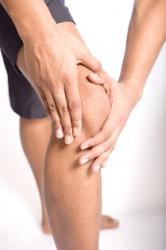More than 100 different conditions fall under the umbrella term “arthritis,” with symptoms ranging from mild to severe, depending on the number of joints affected. Severe cases of arthritis can even result in deformity and disability. If you are struggling with arthritis and joint pain, you are not alone. Our North York neck and back specialists understand how frustrating arthritis pain can be, especially when it stops you from living an active life. This information will help you better understand the different types of arthritis and joint pain and how our neck and back specialists can best help manage your pain, so you can live a fully, healthy life.
 The word “arthritis” means inflammation of the joint; this typically causes swelling, redness, warmth and pain. Osteoarthritis is the most common form of arthritis; this condition develops and worsens slowly over time. Osteoarthritis symptoms include tenderness at the joint, stiffness (especially in the morning or after a period of inactivity), a grating sensation when the joint is in use, and bone spurs that develop around the affected joint. Rheumatoid arthritis, or RA, is a chronic inflammatory disorder that typically affects the small joints in the hands and feet. Unlike osteoarthritis, RA affects the lining of the joints, eventually causing a painful swelling that can result in bone erosion and joint deformity. While older individuals are more likely to develop both osteoarthritis and RA, arthritis is not just a disease of the old. Young adults may also develop arthritis, and some types of arthritis, such as juvenile RA, can affect children.
The word “arthritis” means inflammation of the joint; this typically causes swelling, redness, warmth and pain. Osteoarthritis is the most common form of arthritis; this condition develops and worsens slowly over time. Osteoarthritis symptoms include tenderness at the joint, stiffness (especially in the morning or after a period of inactivity), a grating sensation when the joint is in use, and bone spurs that develop around the affected joint. Rheumatoid arthritis, or RA, is a chronic inflammatory disorder that typically affects the small joints in the hands and feet. Unlike osteoarthritis, RA affects the lining of the joints, eventually causing a painful swelling that can result in bone erosion and joint deformity. While older individuals are more likely to develop both osteoarthritis and RA, arthritis is not just a disease of the old. Young adults may also develop arthritis, and some types of arthritis, such as juvenile RA, can affect children.
 A joint is formed where two bones meet. There are more than 100 different joints in the body, some which move slightly and some that do not move at all. Synovial joints are the most common and also the most complex type of joint in the body. Synovial joints consist of:
A joint is formed where two bones meet. There are more than 100 different joints in the body, some which move slightly and some that do not move at all. Synovial joints are the most common and also the most complex type of joint in the body. Synovial joints consist of:
In a healthy joint, all parts of the joint will work together to reduce friction. When you move, the joint capsule will hold everything in place, so you can move freely and without pain. This is not the case for joints affected by arthritis.
Osteoarthritis, or OA, is a noninflammatory disease where the cartilage breaks down much faster than it can be repaired. When the cartilage is gone, the bones grind against each other, causing pain. Pain may also be felt in the supporting muscles and tendons. Bony spurs grow from the bone edges, leading to changes in the shape of the bone and joint.
Rheumatoid arthritis is a chronic, systemic, inflammatory autoimmune connective tissue disease. The body fails to recognize its own cells and creates antibodies to attack the “invading” tissue, causing joint inflammation and deformity. Here in Canada, RA affects 1 out of every 100 people. Unlike OA, RA pain does not go away with rest. And while OA may only affect joints on one side of the body (for example, the left knee is fine but the right is affected), with RA, if one knee is affected, the other will be, too. OA progressively gets worse, while RA is marked by flare-ups and remission periods that can alternate for years. Over time, though, these inflammation episodes result in the loss of joint function.
If you have been diagnosed with OA or RA, our North York neck and back specialists can help manage this pain. For more information on arthritis and joint pain treatment, schedule a diagnostic appointment with our team. Call (416) 787-2565.